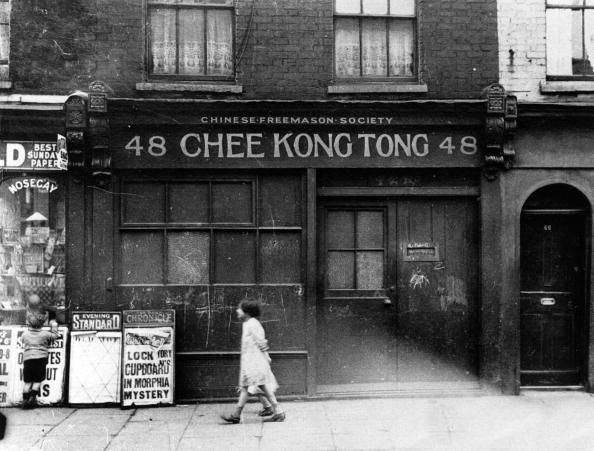
This is a new column that intends to introduce Londoners and visitors to another side of this great city – the stories of its Asian communities and places of interest related to Asia in general. This week, we start off with Chinatown and the first Chinese immigrants who originally lived at Limehouse in east London.
Most residents and tourists in London know about the vibrant and active Chinatown in Westminster, sandwiched in between Leicester Square and Soho, but far fewer folks are aware that there was a much earlier Chinese community located in Limehouse near the London Docklands area.
The first Chinese in Limehouse arrived in the mid-1800s by most estimates. Their numbers increased exponentially by the 1880s, though the peak of the district was probably in the interwar years (1920s-30s) by which time a thriving neighbourhood had taken shape, encompassing Chinese grocers, numerous restaurants, gambling halls, and the notorious Opium dens. Even a Confucian temple once existed there. The Chinese here were inevitably connected to the immense amount of trade being done on the Thames river when London was a great port city, with ships coming from as far afield as India and of course, China, where the British were illicitly dealing in opium (a narcotic drug) in exchange for tea and other precious goods like silk and spices.
A thriving neighbourhood had taken shape, encompassing Chinese grocers, numerous restaurants, gambling halls, and the notorious Opium dens
Limehouse was made famous – or infamous – by British author Sax Rohmer’s Fu Manchu mysteries, which many people look down on now as stereotypical or even racist towards the Chinese. Dr. Fu Manchu was a fictional Chinese criminal who terrorised the city of London in a series of books, films, TV programs, and more. The depiction of Limehouse in the first novel, ‘The Mystery of Dr. Fu-Manchu’ (published in 1913), was dark, dirty and dangerous. But there is no real evidence to suggest that Limehouse was any more sinister than other parts of London in the Victorian and Edwardian eras – although certainly, East London as a whole was poverty-stricken and criminals such as Jack the Ripper did indeed walk the streets at night.

Eventually, after World War II, when many of the buildings in Limehouse had been destroyed or damaged by German bombing air-raids, most of the Chinese still remaining decided to pack their bags and move out to other parts of London, eventually settling down and setting up a more-or-less official Chinatown in west London. Anyone looking to buy or sell groceries and other products from all parts of East Asia now do much of their business there. The majority of Chinese shops, casinos, restaurants and bars are all located in this relatively new Chinatown (and though opium smoking has long since been outlawed, you can still visit a secret place called ‘Opium’ for a Chinese-inspired cocktail). Chinese New Year is celebrated here every year with bright red lanterns and a boisterous parade that is enjoyed by all ethnic groups – not only the Chinese. This Chinatown even featured in an episode of the hit BBC drama ‘Sherlock’ (again focusing on connections with the Chinese criminal underworld, whether such a thing actually exists or not).

Today, virtually the only reminder of the old Chinese community in Limehouse is in some of the street names – Canton Street, Mandarin Street, and the like.
By Tim Holm



